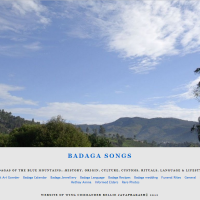Chinese Connection and Nilgiris Tourism
Nilgiri tourism can be taken to a new orbit if its global historical and heritage connections are imaginatively exploited through public-private collaboration. Very few hill areas can boast of so many foreign imprints as Nilgiris.
The first European to visit and write about Nilgiris was a Portuguese in 1604. The British opened the district to the outside world and laid the foundations of a modern Nilgiris since 1820. Soon after that the Scots brought horticulture, plantations and education. German, Danish, Swedish missionaries followed. The Swiss then paved the way for a mountain railway. Gold rush brought a horde of foreigners.
 The high ceiling prisoner’s room with tiny skylight
The high ceiling prisoner’s room with tiny skylight
After Independence, the Canadians built hydro electric projects. The French set up the first public sector unit. The West Germans upgraded agriculture. The Americans documented the whole history of the Nilgiris.
However, the Chinese connection still lies buried. There can be no better time to discover it than this year which has been declared as India-China Year of Friendly Exchanges.
The Chinese connection starts from around 1850s when a group of skilled Chinese prisoners following the second Opium War between the British and the Chinese landed up in the Nilgiris. They took part in the construction of the Lawrence School at Lovedale, planted tea for the first commercial tea estate which was aptly named Thiashola (Thia for tea in Chinese and shola for forest in the local language) and pioneered cinchona cultivation to fight the scourge of dreaded malaria.
Of the many Chinese relics, only the Cinchona factory and prison remain intact in the care of Tantea.
In 1864 W.G.McIvor, the superintendent of cinchona plantations and earlier the architect of Government Botanical Gardens asked the British government for 500 convicts to develop the cinchona plantations, having found the local tribal labourers too lethargic. The first convicts arrived in 1865 from the British Straits Settlements.
The Naduvattam jail consisted of two large rooms with brick walls and zinc sheet roof with only a small sky light for each of the nine prisoner’s quarters. Wooden planks served as beds and each prisoner was provided with ‘one rug and two cummlies’.
After serving their sentence and service, the Chinese prisoners are believed to have settled in and around Naduvattam engaged in gardening and dairying, some of them marrying local women.
The Chinese contribution deserves to be remembered and commemorated for its role in controlling malaria and initiating cultivation of tea which remains the backbone of the district’s economy.
The Naduvattam jail and factory remains almost intact along with the hangman’s room. The location is still breathtaking and convenient for access, being just on the roadside. Some efforts are on way to make it a tourist attraction. However, it has the potential to be made into a major tourist attraction together with a museum, a model mini tea factory, a cafeteria and heritage cottages by suitably modifying the existing vintage staff quarters beautifully dotted around the factory.
Discover more from Badagas of the Blue Mountains
Subscribe to get the latest posts to your email.


 The prison name board
The prison name board The hangman’s room
The hangman’s room








 Mookuthi
Mookuthi  Chinna
Chinna 






 ==
==















































Dear Sir, I found this fascinating as I am an alumnus of The Lawrence School, Lovedale. Shall write to you separately. Thanks for your wonderful blog which reflects your dedication and commitment
LikeLike
Completely by accident got to read your amazing ” Chinese connection”. blew my mind. I visit Ooty regularly would it be possible to meet you. I am there from 25th April to about 5th May and live very close to Lawerence school Lovedale. Ravi
LikeLike